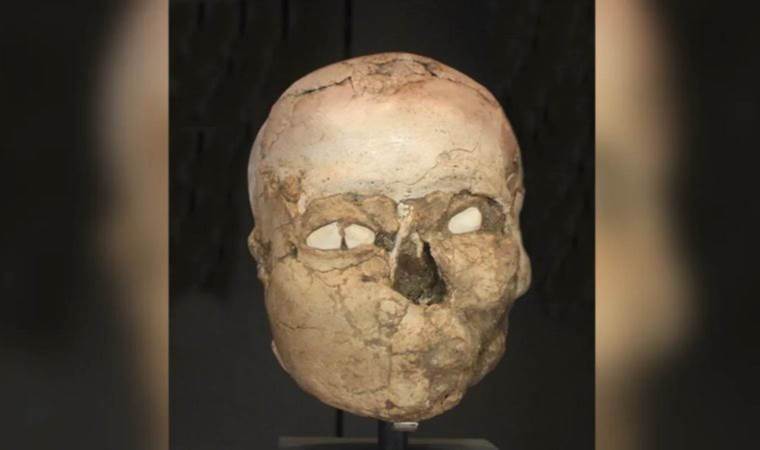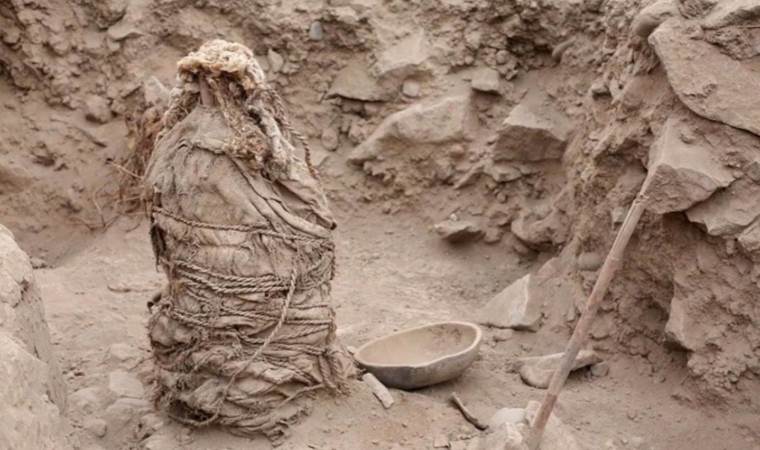The mysterious tale of Neolithic 'plastered skulls'
Archaeologist Kathleen Kenyon discovered the first Neolithic 'plastered skulls' in Jericho, Palestine, in 1953, sparking intrigue with their life-like decorations from 9,000 years ago. Recent excavations in Turkey's Tepecik-Çiftlik site have unearthed more such skulls, yet the true purpose of this ancient ritual still eludes historians.

Approximately 9,000 years ago, among the dwellers of the Middle East, a peculiar custom emerged in the historical annals. Envision this: plastered skulls adorned with vibrant pigments and intricate details, offering an otherworldly semblance of life to the long-departed. Yet, the reason behind this enigmatic practice continues to elude historians, shrouded in the mysteries of time.
Our journey into this captivating saga begins in 1953, when archaeologist Kathleen Kenyon stumbled upon the first Neolithic plastered skulls in Jericho, Palestine. These fascinating relics, adorned with live masks and eyes decorated with seashells, ignited a curiosity that would lay the groundwork for a lasting mystery.
As the sands of time reveal more clues, we find similar instances across the Levant and Anatolia, each with its own interpretation of this mesmerizing burial ritual. A prevailing theory suggests that the plaster masks were a bid to breathe life back into the skulls, transforming them into revered ancestral figures.
In a recent expedition, researchers turned their attention to the Tepecik-Çiftlik site in Turkey, unearthing seven plastered skulls that belonged to six young adults and a child. A deliberate choice of youthful individuals adds an intriguing twist to this ancient tradition.
The skulls, like spectral canvases, were coated in pigmented plaster, with hues like azurite and goethite creating an otherworldly palette. Despite lacking the seashell eyes, these findings resonate with a common craftsmanship passed down through an ancient oral culture.
Yet, the revelations don't end there. Brace yourself for the most captivating twist—a revelation that these plastered skulls existed for centuries before finding their final resting place. These time-worn relics, it seems, required periodic touch-ups and renovations, evident in noses added after the initial plastering.
But, as with any good mystery, the crux of the tale remains hidden. Despite the concrete evidence of tissue removal and meticulous crafting, the why and how of these plastered skulls continue to elude our grasp. The ancient whispers persist, leaving us to marvel at the captivating enigma of the Neolithic 'Plastered Skulls.'
Most Read News
-
 China integrates AI into undergraduate studies
China integrates AI into undergraduate studies
-
 South Korea, US to hold trade talks this week
South Korea, US to hold trade talks this week
-
 Germany cuts economic growth forecast to stagnation for
Germany cuts economic growth forecast to stagnation for
-
 6.3 magnitude earthquake strikes off Indonesia’s Talaud
6.3 magnitude earthquake strikes off Indonesia’s Talaud
-
 Kremlin says Putin open to talks on civilian strikes mor
Kremlin says Putin open to talks on civilian strikes mor
-
 South Korean military holds live-fire drills near inter-
South Korean military holds live-fire drills near inter-
-
 Wife of former US Senator Menendez found guilty in bribe
Wife of former US Senator Menendez found guilty in bribe
-
 Harvard University sues Trump administration over fundin
Harvard University sues Trump administration over fundin
-
 Zelenskyy demands Russian clarity over strikes on civili
Zelenskyy demands Russian clarity over strikes on civili
-
 Pope Francis' funeral to take place on April 26, Vatican
Pope Francis' funeral to take place on April 26, Vatican












